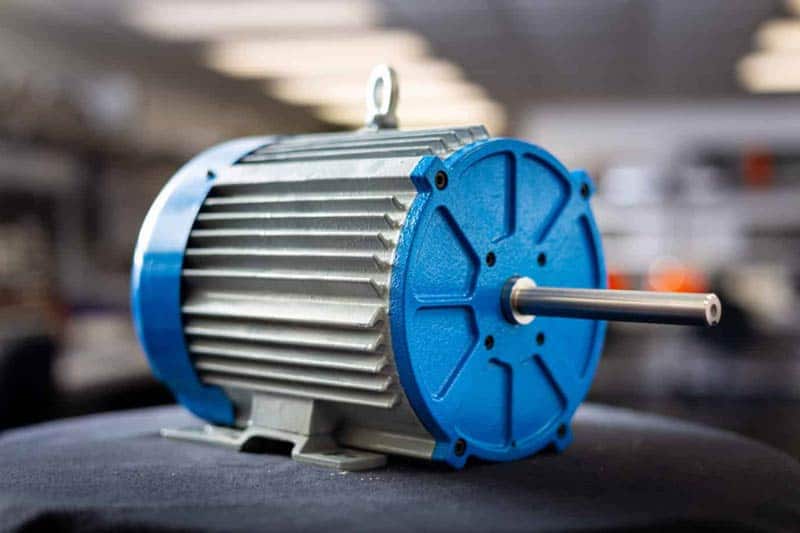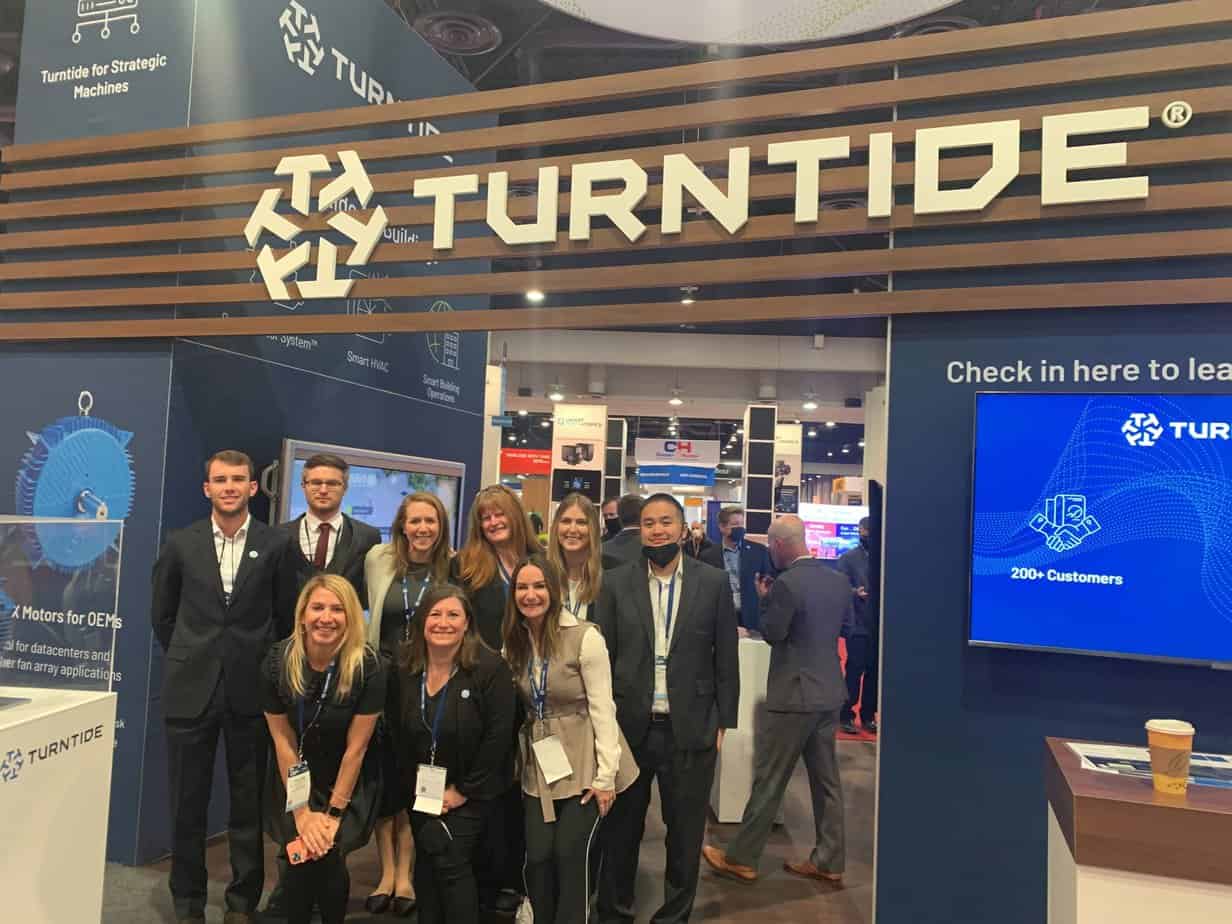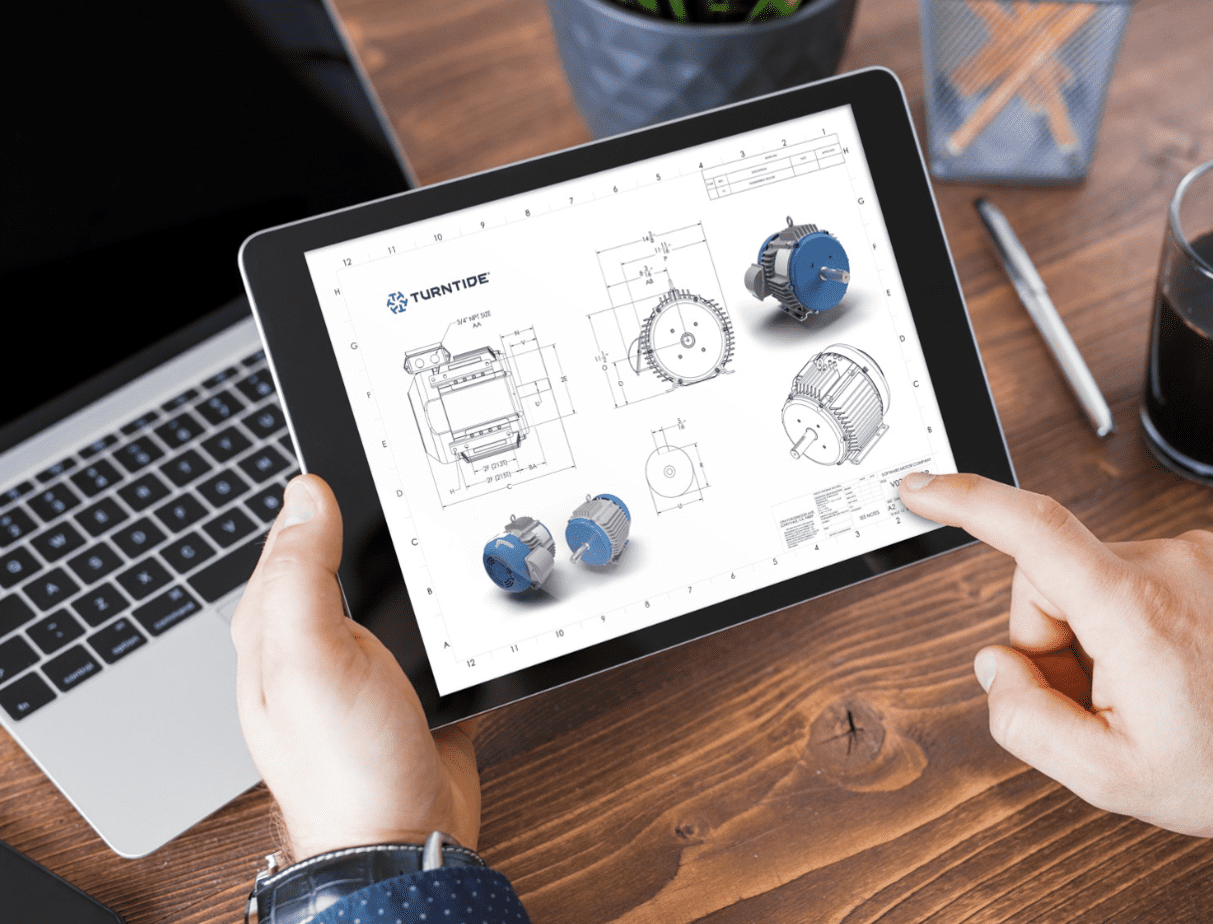Motors are the backbone of our world, the hidden driver of prosperity and comfort earned through technological advancement, but they’re also the hidden driver of climate change. Today in the U.S., electric motors account for 47% of electrical consumption in commercial and residential buildings and 70% in industrial buildings, and while the induction motors that dominate this space have come a long way since their birth in the 19th century, they’ve reached a point of maturity that makes further efficiency improvements extremely difficult, if not downright impossible.
That’s bad news for the environment. In U.S. commercial buildings alone, which use 1,355 tWh of electricity annually, the motors powering HVAC systems account for 40% of electrical consumption. That translates to 542 tWh, or 14%, of the 3,750 tWh of electricity used across the entire country each year — even without considering the electricity used by HVAC systems in the residential and industrial sectors, where exact figures are harder to come by. This number seemed only destined to rise as warming temperatures drove an ever-growing demand for new units, and as their installation further increased energy use and greenhouse gas emissions.
But then came the Turntide Smart Motor System™, breaking the cycle caused by these conventional induction motors. Turntide’s solution is based on patented high rotor pole switched reluctance motor (HR-SRM) technology, which can reduce annual energy consumption by 57%.
So far, our pilot customers have been saving 64% energy on average from our patented motors. If we assume an overall savings of only half that much, just to be conservative, that means replacing all commercial HVAC motors across the country with this technology would save 173 tWh of electricity, which amounts to an overall electricity reduction of 5%, and reduce CO2 emissions by 91 Mt each year. That’s the equivalent of taking nearly 2 million passenger vehicles off the road — just from adopting HR-SRMs in U.S. commercial HVACs.
Fundamental Change Is Within Our Grasp
Induction motors rely on induced currents in the rotor to produce torque, but these currents produce additional losses that reduce efficiency and may lead to overheating the motors. The Turntide Smart Motor System™, on the other hand, relies solely on reluctance force for torque production.
These switched reluctance motors (SRMs) work by wrapping a coil of copper wire around magnetic steel to create an electromagnet, which then attracts the rotor made from the same magnetic steel each time the coil is energized, allowing for the simplest mechanical design free from permanent magnets or rotor windings. They also possess other intrinsic qualities, including improved reliability, reduced manufacturing costs, and zero dependency on rare-earth metals.
Although this technology has been around for two centuries, several drawbacks have prevented its wide-scale adoption: poor efficiency, low power density, excessive noise and vibrations, and increased torque ripple. These motors are also hard to design and even harder to control — complex but not insurmountable problems that challenged my entrepreneurial mind.
Cracking the Code to Powering Our World
I spent about 10 years working with induction motors and variable frequency drives (VFDs) before coming to the U.S. for graduate studies in 2002. After a lot of reading and contemplation, I decided to focus my research on improving SRMs, a historically overlooked technology with the potential to change how humans use energy. Scholars have long known that the way to reduce two of its predominant issues — acoustic noise and torque ripple — is to increase the number of phases. Unfortunately, traditional logic dictated that increasing the number of phases also meant increasing the number of stator and rotor poles, which came with an unacceptable cost.
So, instead, I asked: Why not just increase the number of rotor poles and leave the number of stator poles unchanged. This solution seems counterintuitive at first glance — since increasing the number of rotor poles increases core losses and decreases saliency ratio, which means you’ll actually lose on efficiency and torque — but now serves as the foundation of the Turntide Smart Motor System. In fact, I was laughed at for this idea by a senior Ph.D. student and might have been turned down for a position after presenting this research.
What they missed was that by increasing the rotor poles, you get more space for copper, increase the air-gap diameter, and achieve a higher number of strokes per revolution, which are all useful variables for motor designers to play with. The key, as in all things, is to strike the right balance for the situation and make smart design choices that simultaneously improve torque and efficiency. In light of the following equation, it’s not difficult to see that for a given number of phases (m), the average torque (Te) would increase by increasing the number of rotor poles (Nr) while keeping the degradation of co-energy (dWm) in check.
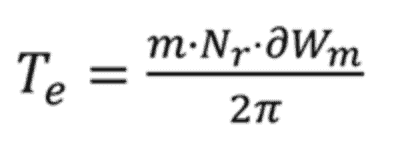
I explored numerous other stator and rotor pole combinations and found a formula (named the “PD formula” in my Ph.D. dissertation), written below, that would yield a new family of SRMs with a higher number of rotor poles, where Nr = the number of rotor poles and Ns = the number of stator poles.
Nr = 2Ns – 2
This new family of HR-SRM provides smart trade-offs that tip the balance in favor of gaining more torque and efficiency despite negative artifacts that come with the increased number of rotor poles. After developing the formula to calculate that balance, I was able to design a 3-phase prototype, 6/10 HR-SRM, with detailed analytical and finite element analysis (FEA) studies and experimental verifications.
While working out the formula, I had another important realization: SRMs are highly non-linear and small design changes can have big consequences. Engineering is all about managing the bulge when you squeeze the balloon, and the same is true for SRMs, so I developed a detailed simulation model that ran on the best-in-class Ansys FEA simulation tools to design practical HR-SRMs. This revolutionary model was dynamic, realistic, and capable of high fidelity, and it made all the difference in optimizing the motor design for superior performance. The model runs thousands of simulations — each dot in the figure below represents a simulation iteration — to explore the design space and converge to few optimal motor design candidates.
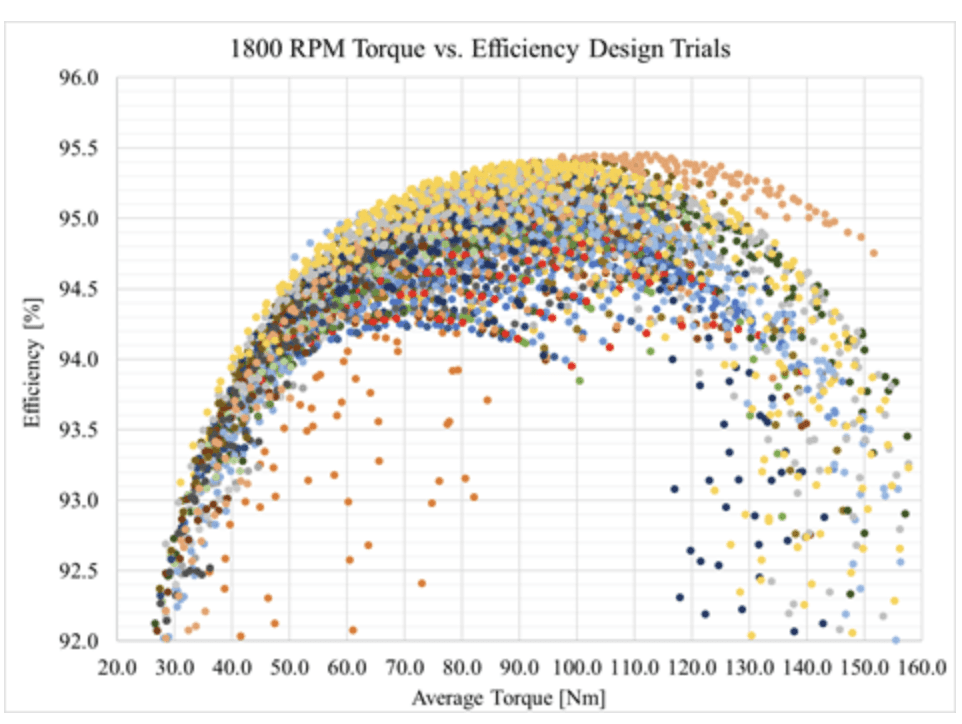
In a comparison study between conventional 6/4 SRM and novel 6/10 HR-SRM, the HR-SRM actually offered 37% more copper area, a 38% higher stator back-iron to pole-width ratio, and an 18% increase in air-gap diameter — improvements that also boosted overall torque and efficiency. These benefits can be visualized with the help of the following figures.
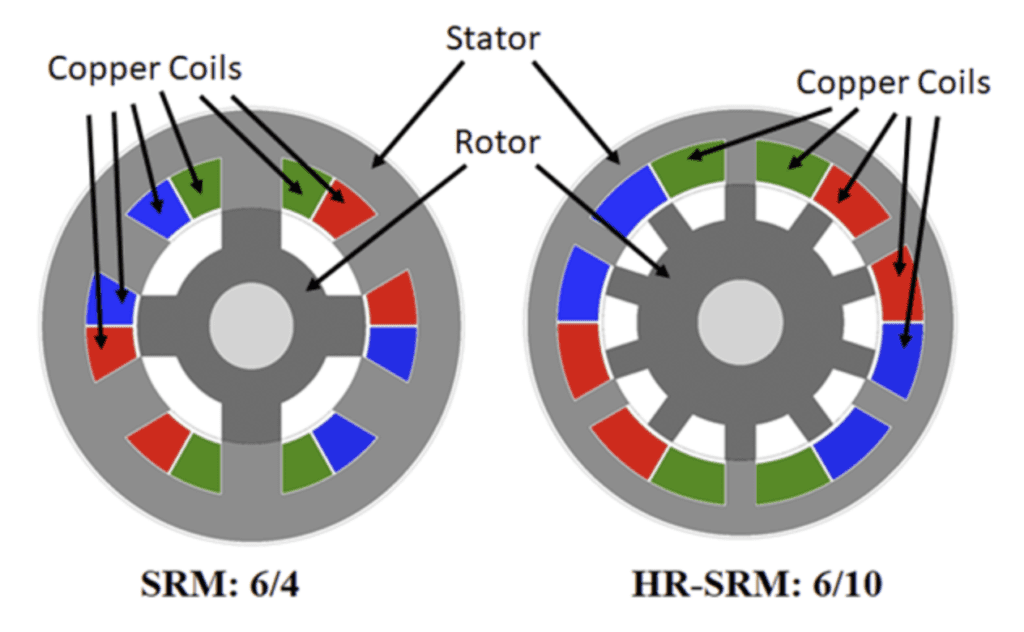
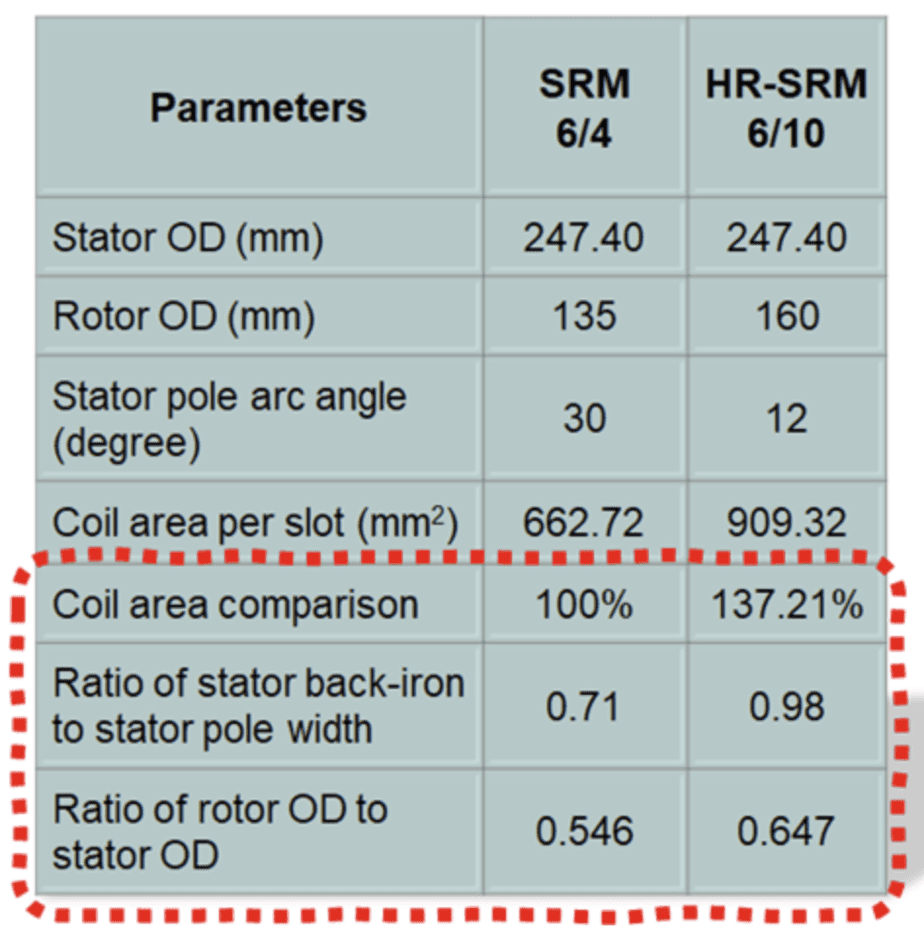
Why Now Is the Time for Switched Reluctance Motors
The convergence of several global trends over the past decade have strengthened the viability of SRMs, including cheaper silicon and computing power, the negative environmental impacts of mining rare earth metals and associated geopolitical risks to the supply chain, and the limits of conventional induction motors — not just in HVACs, but in all uses.
In 2014, I partnered with Silicon Valley entrepreneurs to co-found Software Motor Company, now Turntide Technologies, and commercialize this technology for widespread use. Along that journey, we’ve:
- Matured the technology for commercialization
- Developed cost-effective manufacturing
- Eliminated the position sensor in the motor to improve cost, installation, and reliability
- Developed an algorithm to control the motor with optimal efficiency under a wide range of operating conditions
- Established the credibility and driven the acceptance of the technology
We overcame these challenges by investing heavily in technical capabilities, building a team of passionate and smart people, collaborating with experts around the world, and prioritizing problems in the context of the market. Since laying the groundwork, market forces have propelled this technology forward at a stunning pace. In 2021 alone, Turntide has launched sustainability solutions for multiple industries — including real estate, transportation, dairy, agriculture, construction, and aerospace — and received investments from funds backed by Bill Gates, Amazon, BMW, and Iron Man actor Robert Downy Jr.
This technology has nearly unlimited commercial potential, but it has even more potential at a purely human level. While much of this progress will rely on the adoption of clean energies, SRMs have the ability to greatly reduce the amount of electricity we consume, even beyond HVAC systems, which means that clean energy can power more of the world without any increase in their production.
SRMs might not be the solution to achieving net-zero carbon emissions, but they could very well be the key that unlocks true long-term sustainability.
What's New
Take the Next Step
Talk to our team to see how we can help you save energy and boost your bottom line.
Schedule Consult

